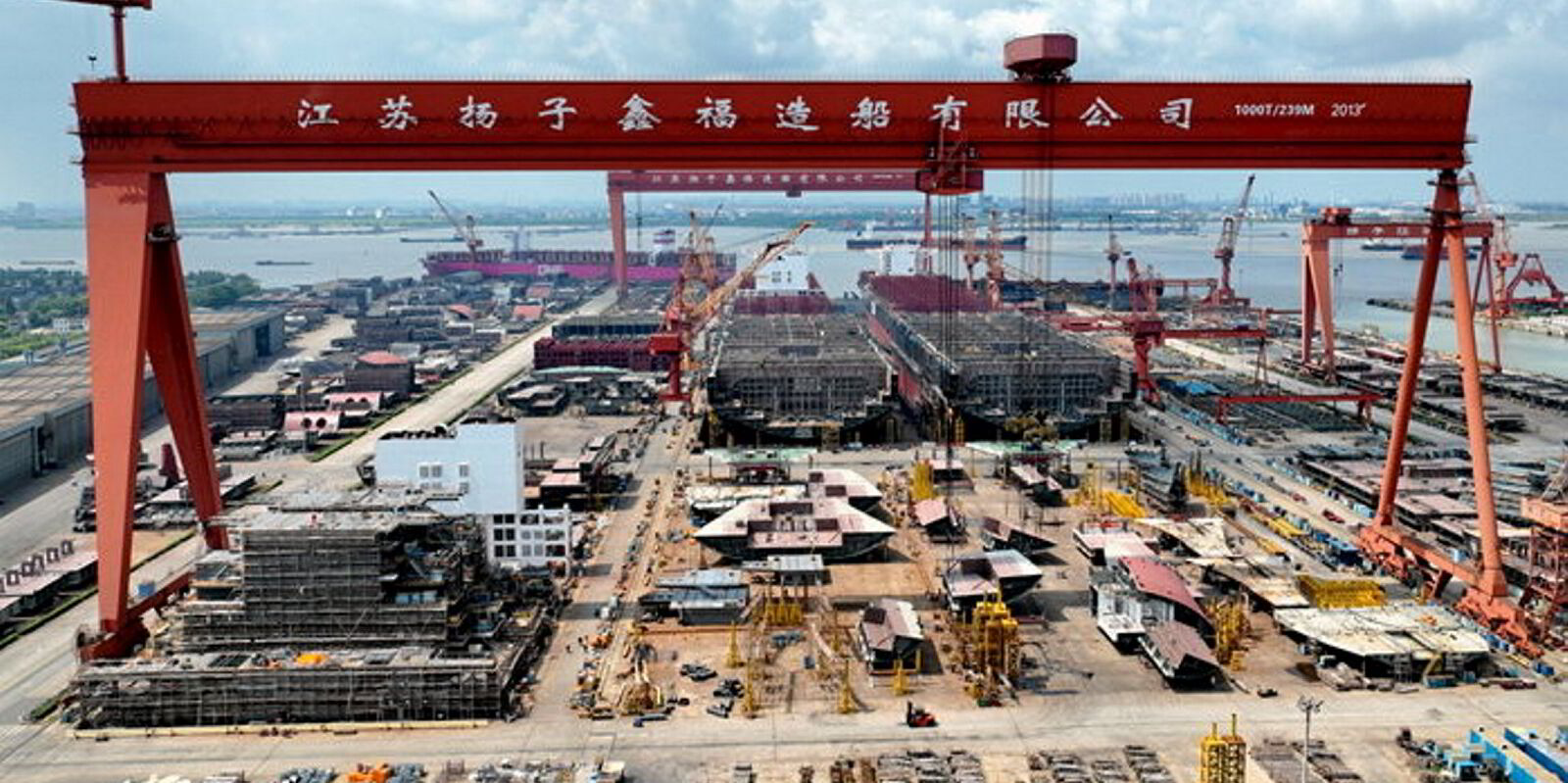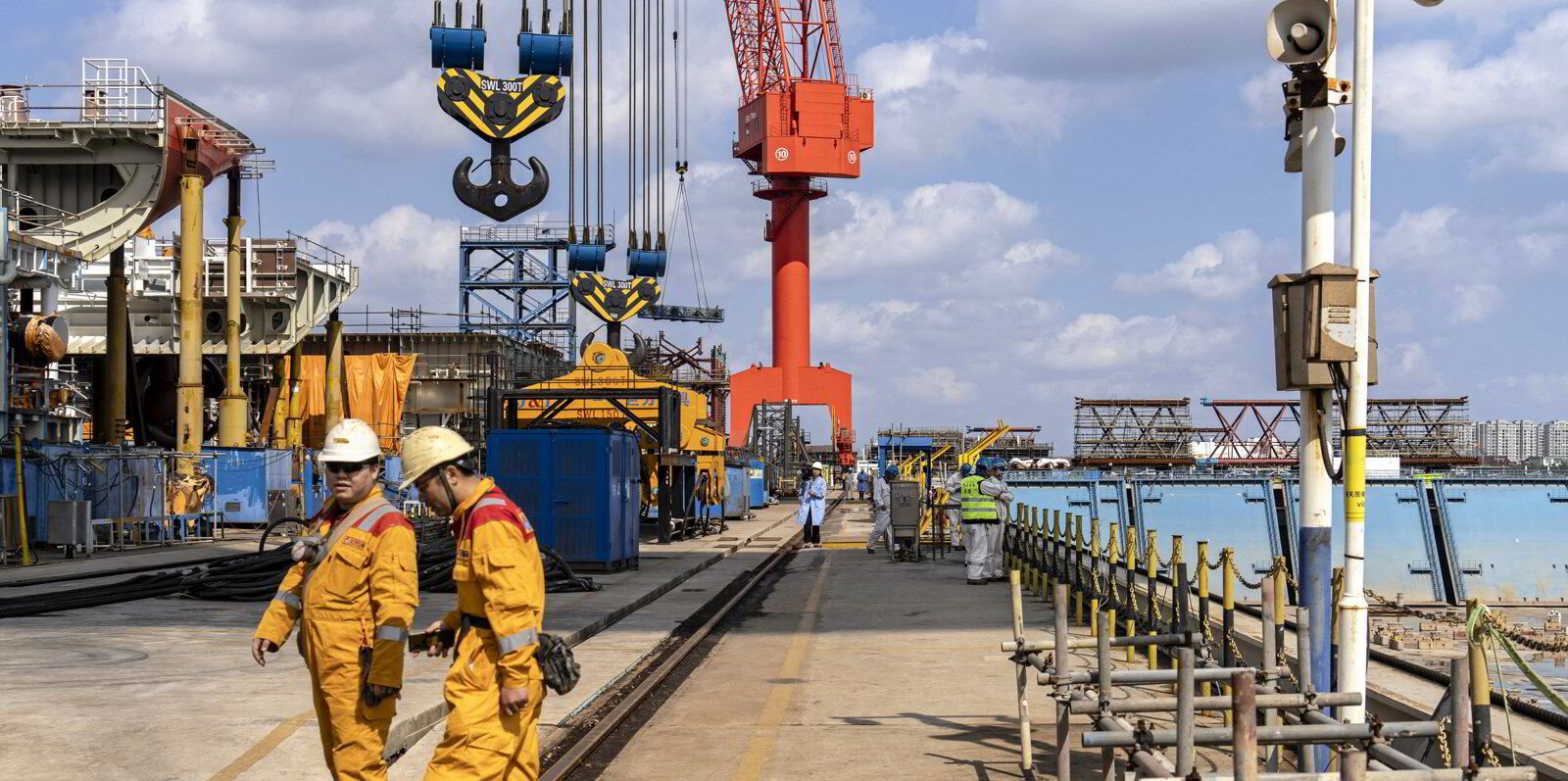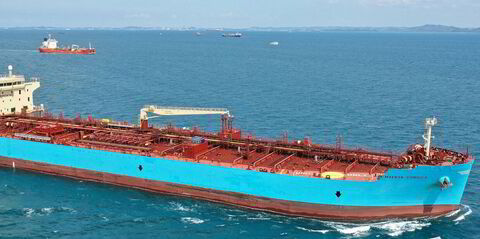China is dominating the global shipbuilding market in a way not seen this century.
Experts say its grip on the industry has not been matched since Japan led the field in the mid-1900s.
China builds nearly three of every four new vessels ordered, according to a report covering the first nine months of 2024 from the country’s national shipbuilding association, CANSI.
Contracts totalling 87.11m dwt were placed, with volumes up nearly 52% over 2023, it added.
Growth has been fuelled by rising demand for container ships, car carriers and gas tankers, the greening of the global fleet, and a crunch in global shipbuilding capacity.
The Far East powerhouse has scooped orders in fresh vessel segments to lead newbuilding tables in 14 of the 18 major shipbuilding project types, the report said.
And China’s shipyards now have an eye on an even greater slice of the global business.
Stuart Nicoll, director of Maritime Strategies International, believes capacity is set to grow by 5m cgt between 2023 and 2028, an increase of 31%.
Nicoll said: “Things are moving very quickly.
“There was a strong increase in apparent capacity this year, and further growth is promised to 2028 due to yard reactivations and expansions.”
Some observers say China’s order-winning streak is down to Beijing’s political will and support for the industry.
A huge chunk of orders have gone to state-backed yards under the umbrella of China State Shipbuilding Co. The group cemented its position at the top of the pecking order this year by taking in subsidiary China Shipbuilding Industry Corp, a move TradeWinds first reported to be in the works more than a decade ago.
But it is private shipyards that are now pumping multimillion-dollar figures into expanding capacity, with state-owned yards unable to show the same agility, observers say.
TradeWinds understands that at least five privately owned shipyards have big-scale expansion plans.
They take the form of fresh investments in dry docks and the “resurrection” of shipyards that were closed when the shipbuilding market collapsed in 2012.
Hengli Heavy Industry, Yangzijiang Shipbuilding, New Times Shipbuilding, Jiangsu Hantong Ship Heavy Industry and Zhoushan Changhong International Shipyard are all targeting orders for high-value-added vessels, such as gas carriers and large ships, through expansion.
Shipbuilding newcomer Hengli Heavy is putting down about CNY 11bn ($1.5bn) in phase two of its plan to increase shipyard capacity by 1.8m dwt and add capacity for 1.8m tonnes of steel processing.
Hengli Heavy joined the shipbuilding industry in late 2022 after its parent company, Hengli Group, bought the collapsed STX Dalian Shipbuilding for CNY 1.73bn ($256m). It has already pumped in CNY 18bn to expand the current dry dock and restructure the yard to provide a shipbuilding capacity of 6.3m dwt to deliver around 40 vessels per annum at peak operation.
The phase two facility could boost Hengli Heavy’s annual shipbuilding capacity to 7.1m tonnes, more than doubling its current output.
Singapore-listed Yangzijiang plans to invest $413m to build a clean-energy shipbuilding site that will take up 867,000 square metres.
It is earmarked to be completed in 2026 and will have an annual production capacity of about 800,000 dwt.
Yangzijiang’s new base is next to its Jiangsu Yangzi Xinfu Shipbuilding, which the shipyard said would enable the company to “seamlessly integrate new facilities, thereby enhancing both productivity and operational efficiency”.
New Times, which is equipped with one 500,000 tonnes-class, one 300,000 tonnes-class and one 100,000 tonnes-class dry docks, is investing up to CNY 5bn ($706m) to develop a smart-ship manufacturing base featuring a mega-sized dry dock and an LNG gasification station.
Zhoushan Changhong is probably the only shipyard that will not be making huge investments in new facilities to seize big orders.
However, it is expanding its shipbuilding capacity by transforming part of its ship repair facilities, which it leases from Jinhai Intelligent Manufacturing, to construct a series of dual-fuel large container ships of 19,000 teu.

Aside from new investments, mergers and acquisitions have also enabled “new shipbuilding capacity” to emerge in the country. Several small and medium-sized Chinese shipyards that ceased shipbuilding activity several years ago are being reactivated.
These include Samjin Heavy Industries, Yangzhou Guoyu Shipbuilding and Sainty Shipbuilding.
Weihai-based Samjin Heavy Industries is now under the control of Wuhu Shipyard. Formerly focused on handymax bulkers, the yard is now building chemical carriers, MR tankers, and pure car/truck carriers.
Former bulker builder Yangzhou Guoyu Shipbuilding was given a new life in July by Guangdong Jovo Gas Technology — a subsidiary of Chinese LNG and LPG trader Jovo Energy and HuaXiang Shipping.
Yangzhou Guoyu has been renamed Jiangsu YiXiang Shipbuilding and will build one 78,900-cbm LNG carrier and two 5,000-cbm LPG ships for Huaxiang Shipping and Jovo Energy, respectively.
Sainty Shipbuilding in Yangzhou, which came under the management of Jiangsu Soho Holding Group this year, is taking orders directly from shipping companies to construct ultramax bulk carriers and MR tankers.
Observers estimate that at least 10 small and medium shipyards returned to the industry in the past 18 months.
Why can China expand?
Several market watchers have questioned how China can expand its shipbuilding capacity.
And asked if the country has not learned its lesson after several shipyards declared bankruptcy during the 2012 industry downturn, which saw Rongsheng Heavy Industries Group — once China’s largest privately owned shipyard with more than 30,000 workers — turn into a ghost town.
A shipbuilding source said record newbuilding prices and low steel costs have boosted margins, enticing Chinese yards to expand.
He added that neither provincial powers nor Beijing have sought to slow shipbuilding expansion due to economic turbulence and high unemployment.
With shipbuilding being a labour-intensive industry, the new facilities should help to create jobs.

The new facilities would also allow Chinese shipyards to diversify their product portfolio to include ship types such as VLCCs, VLGCs and car carriers that used to be largely ordered in Japan and South Korea.
Recent order wins have included six VLCCs that Jiangsu Hantong Group secured from trader Trafigura; a series of VLOCs that Hengli Heavy inked from Winning Shipping; very large ammonia carriers that Yangzijiang bagged from Japan’s Nissen Kaiun and large LNG dual-fuel container ships that MSC Mediterranean Shipping Co penned at Zhoushan Changhong and New Times.
Nicoll said the current expansion is different from two decades ago when it was at a much larger scale and seemingly uncoordinated, with many small shipyards either being built or switching focus to the international markets.
“This time there are fewer players and two clear trends — resurrection/reactivation and a focus on a few large yards, backed by established players rather than a hotchpotch of small/new entrants,” he added.







